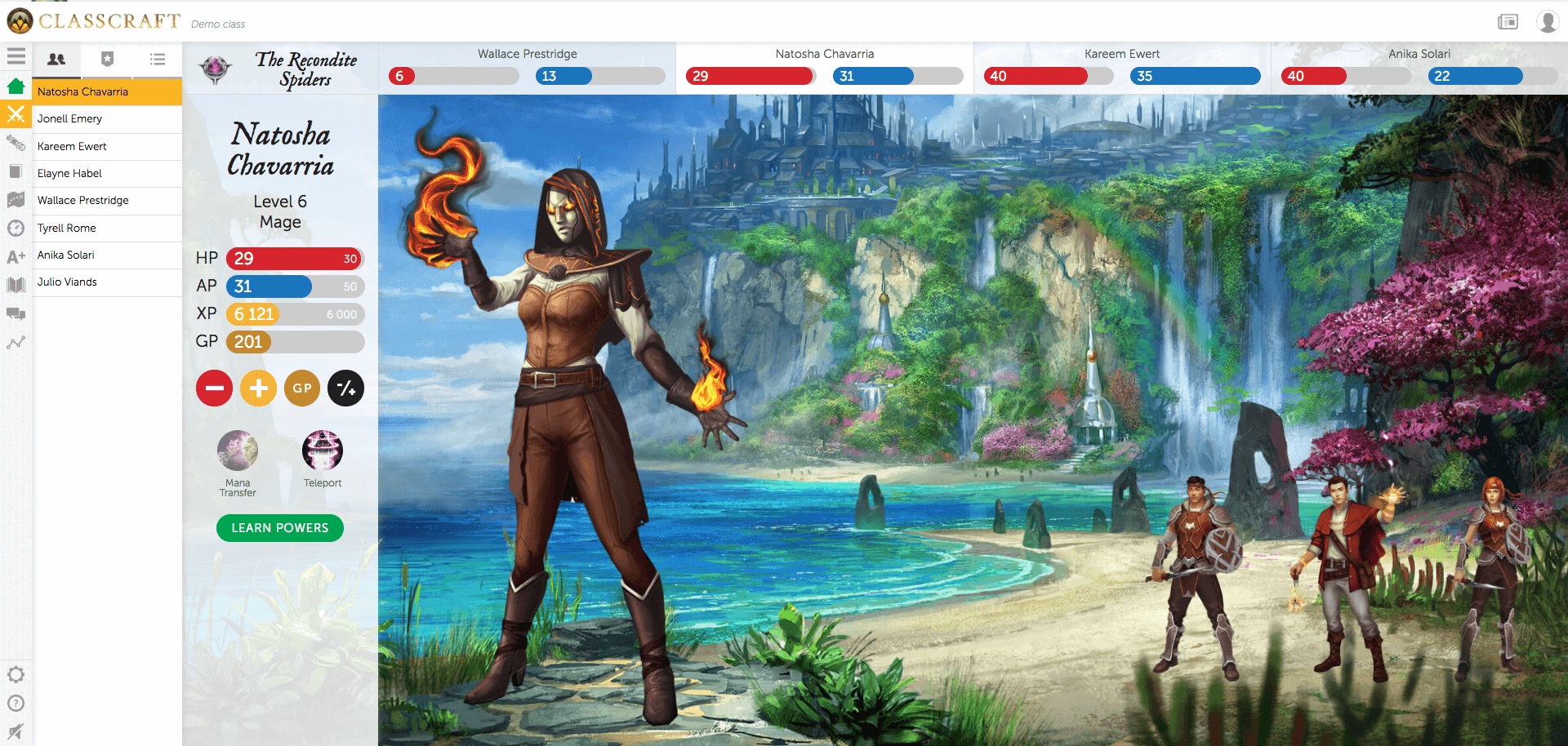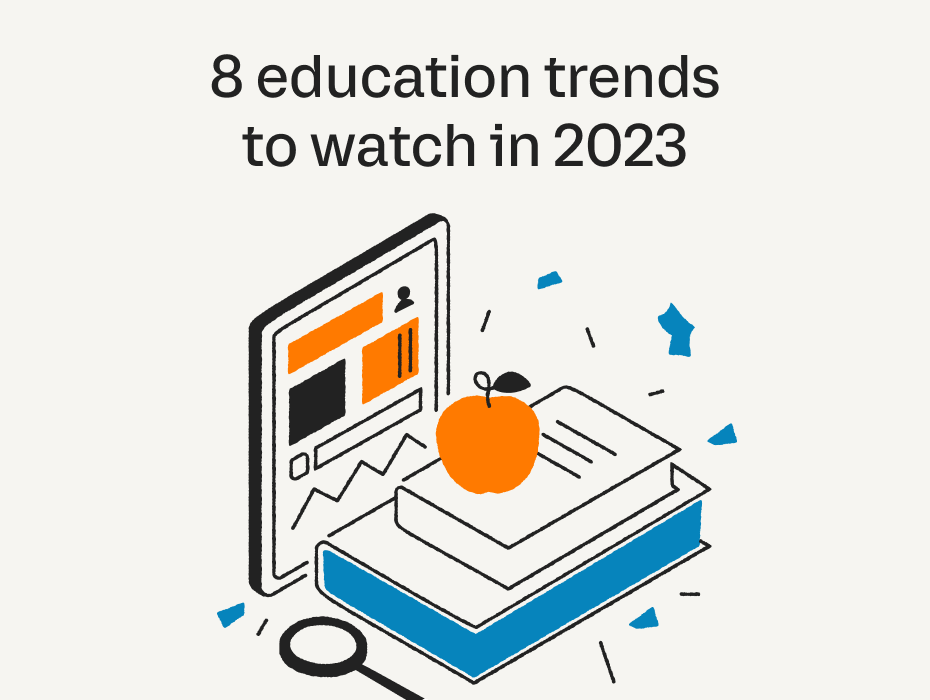With every new year come new education trends. Whether you’re an administrator or classroom teacher, keeping tabs on these higher education trends and incorporating them into the running of your university classrooms can help your institution and your students find success this school year.
Let’s take a closer look at eight trends on the horizon in education:
- Online learning expands opportunity and accessibility in education
- Hybrid learning enters a new phase
- Project-based learning is top priority
- Gamification in learning becomes the new norm
- Online learning infrastructure continues to level up
- Students and families are (more) cost conscious
- High-quality communication with students becomes critical
- Campuses double down on improving student mental health
8 education trends to watch in 2023
1. Online learning expands opportunity and accessibility in education

While the pandemic brought many challenges for educators, it also shifted classrooms to online learning very quickly. This had its pros and cons. Today, while many classrooms have moved back to in-person learning, online learning has become even more solidified as an accessible option for many students.
Universities are seeing demographic shifts on both ends of the age spectrum. New Gen Z students have grown up in the online world and may have completed a portion of their high school years online. Many mature learners are returning to upgrade their education while working, and online learning makes it possible for them to study from the comfort of home, often in an asynchronous manner.
Online learning is also diversity-friendly, providing better learning access for students who are:
- Caretakers of parents or children
- Disabled or chronically ill
- Rural residents
- Traveling due to work or home priorities
- Need to study outside traditional hours due to work commitments
With online learning comes the need for an integrated platform for both synchronous and asynchronous learning opportunities. Your teachers need a safe place to store documents and upload video, and your students need venues to upload their assignments and chat online.
2. Hybrid learning enters a new phase

While many universities used hybrid learning models prior to 2020, more and more university classrooms are embracing the flexibility of hybrid learning. It offers the best of both the in-person and digital worlds: students can chat in class and online and engage with materials in person and through digital community. Hybrid learning gives students a deeper feeling of community while offering the flexibility of digital education.
With hybrid learning, it’s important to utilize consistent technology, providing a unified online portal for students’ course communications. Giving students a learning hub allows them to interact with ease as they become fluent in their online learning platform. It also provides consistency between home and school. Students can use the same platform in class and outside of class.
3. Project-based learning is top priority

Spain, Barcelona. Happy colleagues laughing at desk while studying.
Most students will encounter a work environment that focuses on completing projects independently or as a team, so educational institutions are shifting to a focus on more project-based work. In project-based work and learning environments, “soft skills” such as collaboration, communication, and problem-solving become key to students’ success. Students also learn how to try out ideas and learn from trial and error.

Get project-based learning tips for hybrid teaching
Does your technology simply focus on sending information out to students, or does it facilitate collaboration? More and more, any educational technologies that you use in the classroom should be communication-oriented, seeking to build up students’ ability to collaborate.
4. Gamification in learning becomes the new norm

Today’s students have grown up online with games such as Minecraft. Gamifying education isn’t just part of elementary school classrooms; it can be part of higher education as well. Gamification brings real-life problems into the classroom, and it makes them engaging for students, drawing them into solving problems in a familiar way. For instance, the Wharton School offers an entire course in gamification.
Communication systems can help by providing video content and can give a forum for student connection as they communicate, trying to solve problems together inside and outside the classroom.
5. Online learning infrastructure continues to level up

The pandemic opened peoples’ eyes to online learning, but the experience was quite inconsistent. Many teachers struggled with the overnight change, and they did not have the background or skills to develop and use online teaching tools.
There has been a lot of progress in online learning tools, and now there is a better understanding of both students’ and teachers’ needs. We know that students and teachers alike need ease of access, consistency, and a single platform that fulfills many needs.
6. Students and families are (more) cost conscious

While the cost of a postsecondary education has more than doubled since 2008, in the last few years, the costs have actually gone down slightly. This is due to a few different factors, including the need to attract students during the difficult years of the pandemic. Some institutions are offering discounts to many of their students. The desire is to ultimately increase enrollment.
At the same time, more and more students are holding a full time job while continuing to attend higher education. Students are conscious of both the cost of their education and the associated costs such as books, technology, housing, and commuting to school.
Using an integrated communications platform such as RingCentral that combines phone and virtual classroom support can save your institution on staff training and reduce staff and student frustration with learning technologies.
7. High-quality communication with students becomes critical

As Gen Z students enter the university system, it’s important to be able to communicate in the ways that these students want to connect.
Current and prospective students want to be able to communicate with postsecondary institutions through multiple touchpoints such as voice, SMS, social media, and email. An omnichannel communications system such as RingCentral can help you ensure that you have all of your bases covered when it comes to admitting and retaining students through strong communication.
8. Campuses double down on improving student mental health

In addition to the stresses of teaching and student life, the pandemic and the social isolation that ensued was difficult for teachers’ and students’ mental health. Fostering better mental health and rebuilding a sense of educational community is a focus of educators and administrators in 2023.
Campus mental health programs, online and in person community-building tools, and training in technologies that bring students together can make it easier for both students and teachers to do the work of learning and teaching.
Originally published Feb 01, 2023
Looking For Startup Consultants ?
Call Pursho @ 0731-6725516
Telegram Group One Must Follow :
For Startups: https://t.me/daily_business_reads







